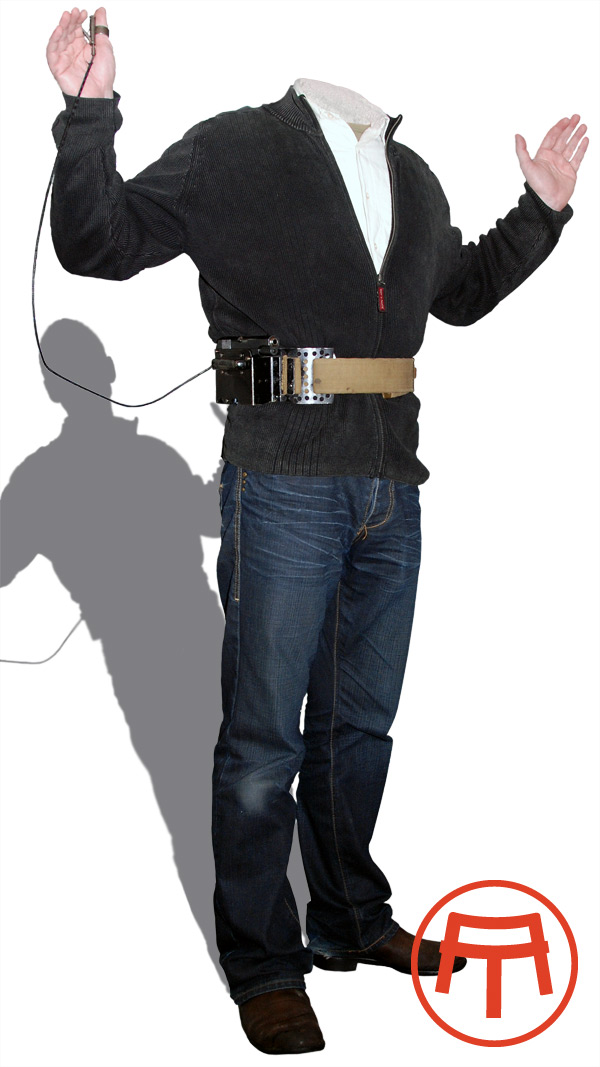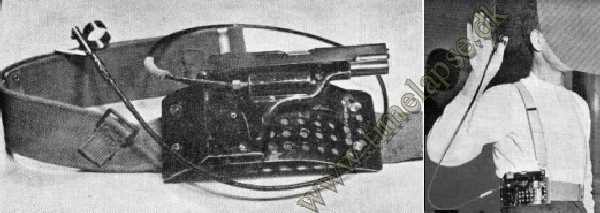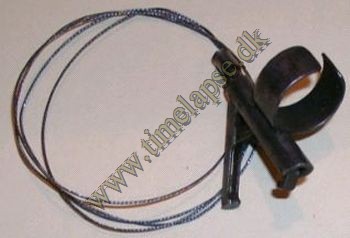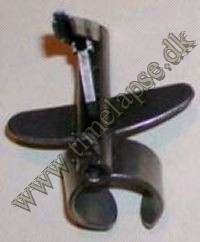|
THE REMOTE CONTROLLED PISTOL

Me with the only known specim of the RCP.
As early as December 28. 1941 at 10:00 am a purple parachute connected to a suitcase was found at the field of Holtegaarden next to Høstentorp. Close by, a little north of there, the body of Carl Bruhn was found still wearing his unopened parachute. The yellow static line still attached to the chute pointed towards south. Next to him was found a canvas packet with 12 automatic pistols (unfortunately the report does not tell which type) inside along with munitions and a folding spade. The suitcase contained a radio telegraph transmitter, a grey rucksack containing civilian clothes and a white rubber package with a most unusual agent “tool” never seen before.
We have only succeeded to find one official document from the War Office that confirms its existence and in this particular document dated March 06. 1942 it is referred to as the "Remote Control Pistol". Despite the official nomenclature
we have in the following text chosen to refer to it as the RCP.
Because of the RCP the German Reichssicherheitshauptamt in Berlin compiled a report which was sent out to all Statspolizei departments notify them of the danger involved in arresting enemy spies and agents. The report signed by Herr. Müller was stamped SECRET and dated February 19. 1942. The report describes the RCP with the usual German thoroughness, and what the Germans think of such a cowardly instruments is clearly described in the text from the report:
Es handelt sich um eine überaus gefährliche Gangsterwaffe, die - soweit bekant - erstmalig von feindlichen Nachrichtendienst eingesetzt worden ist.
According to ”Danish Police Intelligence” from January 07. 1942 the RCP is described in the following manner:
A suitcase containing one radio telegraph transmitter, a grey rucksack containing civilian clothes and a white rubber package with an automatic pistol riveted to a metal plate on a belt and a special trigger device (a very dangers weapon), a dagger etc. inside.
The report was the direct cause for changing the restraining procedure. The decision of declaring an arrest by laying a hand on the suspects shoulder was immediately repealed. We found the report in the National archive DK. and it is now the foundation of this article.
DESCRIPTION
The pistol used is a Colt 1903 in .32ACP. The gun is bolted pointing in the facing direction of the wearer, to a carrier plate made of metal bended so it will follow the shape of the body. A cover plate is mounted to shield the trigger and grip area. A Bowden cable with a release switch attached to a “fingerring” is running from the operator's hand through the jacket-sleeve and connected to the trigger housing.
The system allowed the agent to fire one or more shots from the hip if he was about to be arrested although he was ordered "Hände Hoch" (to raise his hands). The whole splendour is attached to the waist with the standard English model 1937 army belt.

The photo shows the RCP (Enfield Mk.I) found on Agent Bruhn’s body. Note the carefully crafted cover plate compared to the Mk.II version produced by Wilkes Bros.

The photo shows a trigger device with the inner wire from the Bowden cable attached. It is identical to the one found on Mr. Bruhns RCP (Enfield Mk.I).

The photo shows an unknown and maybe improved version of the trigger device. But it could also easily have been the first generation trigger. It is a little bit too clumsy to have been the final product in my opinion.
|




